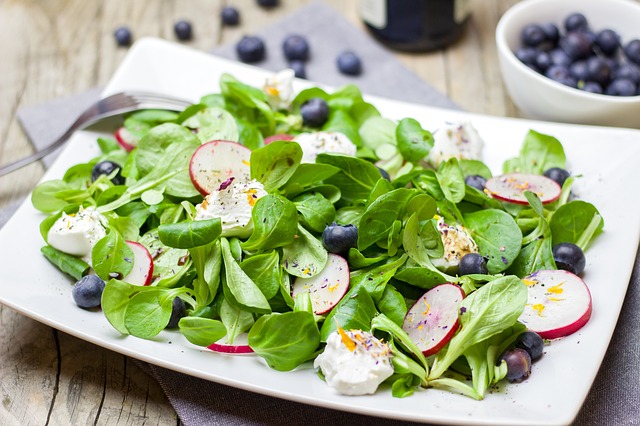The Season of Leafy Greens

Each month, our talented dietitian Alexa helps us by sharing some tips and information about the great work our programs and services teams are doing. Summer is almost here and we have some tasty tips for spicing up your salad and enjoying those healthy greens.
Dark-green leafy greens offer plenty of the antioxidant beta carotene, which helps to form vitamin A in the body and may help lower the risk for certain diseases. The darker the leaves, the more nutrient-rich the lettuce. For example, Romaine has 17x more vitamin A than iceberg lettuce. Some greens deliver folate, potassium, calcium and dietary fiber, too!
Perk up your salad-making with more flavor, color and texture by mixing in different greens.
- For a peppery flavor: arugula or watercress
- For leaves that aren’t green: red-and-white radicchio
- For flavor with a “bite”: chicory or escarole
- For a mild flavor and delicate green color: mâche, Boston or Bibb lettuce
- For a deep-green color: spinach, kale, collard greens
- For a crisp texture: Romaine
Many leafy greens, such as spinach, kale and collard greens, also are well suited for cooking. Try sautéing them in a little oil, then season with spices, such as garlic and just a little salt and pepper. When cooked, greens usually will shrink down by half, so this is important to consider when planning meals.
Greens also can be added to soups, stews, casseroles and other dishes, too. For example, baby spinach leaves add a nice flavor and color when folded into an omelet. They also can be added toward the end when making a homemade soup. Kale can be baked into chips, which makes for a great tasting, healthy snack.
Look for different types of leafy greens at your local grocery store or farmers market. Be sure to wash and dry the leaves thoroughly before using and keep them refrigerated. Enjoy within a few days, as the leaves are likely to wilt or spoil if stored beyond that time frame.


